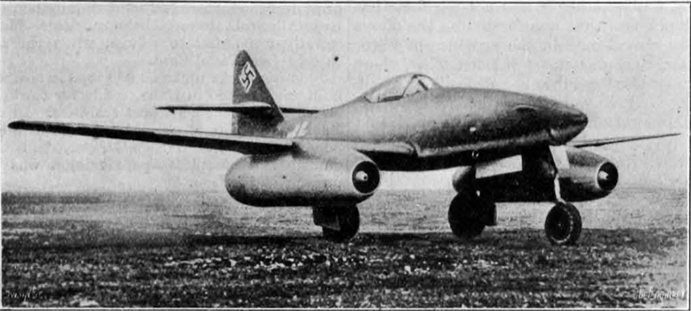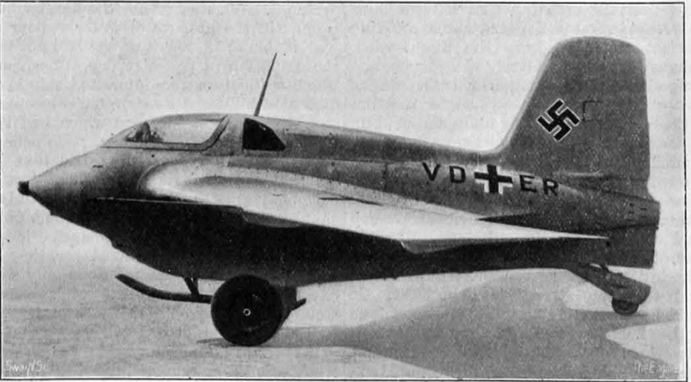Barely had the flames of war ceased smouldering when our predecessors turned their attention to the Nazi regime’s airborne machinery
After hostilities ceased in the Second World War, The Engineer set about assessing some of the technologies that had beset Allied forces in the previous years. Barely had the flames of war ceased smouldering when our predecessors turned their attention to the Nazi regime’s airborne machinery, with the first article dealing with the Luftwaffe’s engines and the second looking at the aircraft they powered.
READ THE ENGINEER'S ORIGINAL ARCHIVE COVERAGE HERE
Both articles make the point that while the in-service equipment may have tended towards the conservative – the articles note that the Allies flew “at least a dozen’” designs of single-seat fighter, but Germany used only two basic designs throughout the war – Germany had a forward programme in advance of the Allies. To keep pace with new models of the Spitfire, Messerschmitt had to continuously improve the Me109, which was 10 years old by the end of the war. In 1937, the article says, the 109 had 500HP and was slower than the Hurricane, but by the end it had 2000HP, could match a Mustang in the air and had 10 times the firepower of the original 109.

Germany also had the world’s first jet-propelled aircraft, in the diminutive shape of the single-engine Heinkel 178, which first flew on 29 August 1939, four days before the invasion of Poland. A flying test-bed that was never intended for military purposes, the He178 used an engine developed by Hans von Ohain, who in 1936 had patented using the exhaust from the gas turbine for propulsion. In developing jet-powered aircraft, Heinkel was soon outstripped by Messerschmitt, whose twin-engined Me262 – known as the Schwalbe (Swallow) or Stormvogel (Stormbird) went into intensive development in 1942 and entered service in April 1944, a few months ahead of the Allies’ first jet fighter, the Gloster Meteor. The article mentions that such aircraft, despite having an impressive performance, could not stay in the air for long; in fact, by the time the Nazi regime collapsed, its supply lines had been disrupted so much by the Allied advance and by air bombardment that the Stormbirds could not be fuelled.
The article points out that the Luftwaffe used engines powered by rocket engines, such as “the amazing little Me163 Komet”. This was “capable of a level speed of about 550mph and could climb to 30,000ft in two-and-a-half minutes”. Although “comparatively quick and cheap to build”, these wooden interceptors were seriously hampered by “their short endurance in the air”, so Heinkel was commissioned to build a cheaper aircraft with slower performance but longer air duration, the He163, an ungainly looking craft with a single jet on top of its fuselage. This was beset with “fairly serious teething troubles”, the article says with wonderful understatement: on its second flight, the leading edge of the wing collapsed and the aircraft broke up in mid-air. Despite this, the design was revised and the aircraft – known as the Volksjäger (People’s fighter) – went into production.

Volksjägers were particularly difficult for inexperienced pilots on take-off and landing, the article notes, but “credit must be given to the Germans for producing what they set out to produce – a cheap fighter with better performance than standard Allied types”.
As the war approached its end, the Nazi regime turned to “last-ditch” efforts. One of these sounds truly terrifying for any pilot who might have found himself unlucky enough to draw the proverbial short straw. The Bacher Natter (Viper) could only be classed as an aircraft because it had wings (albeit very short ones), controls and a pilot, but in every other respect it was a “piloted flak rocket”. Powered by a liquid-fuelled rocket engine and launched vertically, it was intended to destroy enemy bombers with an array of rockets launched from its nose. After this, the pilot would eject and descend by parachute, while the rear fuselage, containing the rocket engines, would break off and also parachute to the ground to be recovered. With no need for conventional take-off or landing, the aircraft would not have needed fully trained pilots. Fortunately (for all), it never entered service – its only test-flight killed its pilot.




Poll: Should the UK’s railways be renationalised?
I think that a network inclusive of the vehicles on it would make sense. However it remains to be seen if there is any plan for it to be for the...